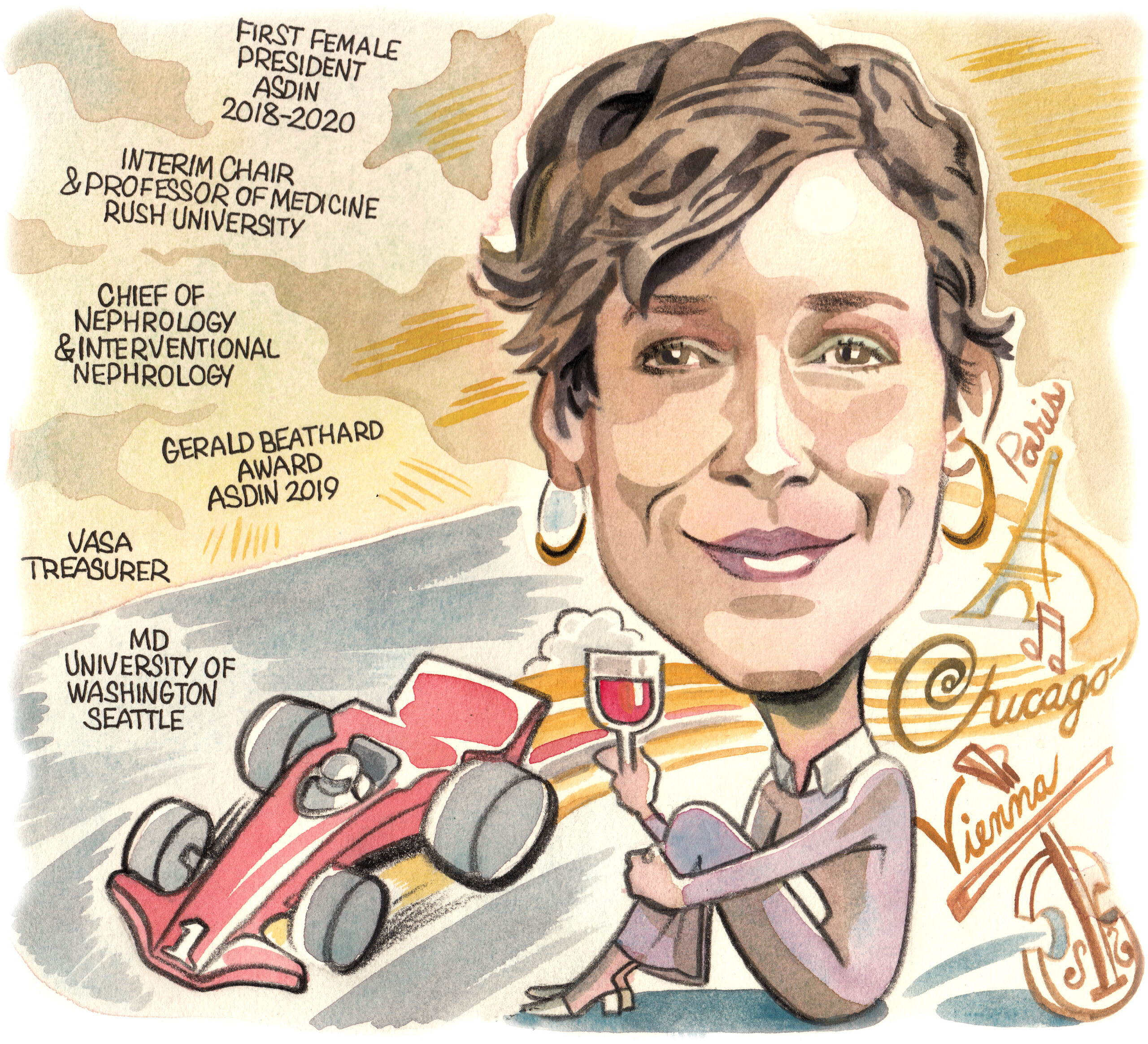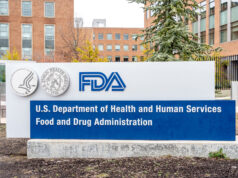 A dedicated educator, distinguished clinician and committed scientist and researcher, Haimanot (Monnie) Wasse is the Muehrcke Family Professor of Nephrology and Interim Chair of the Department of Internal Medicine at Rush University (Chicago, USA), where she founded the interventional nephrology programme, and the first woman to hold the presidency of the American Society of Diagnostic and Interventional Nephrology (ASDIN). In this interview, the Seattle native tells Renal Interventions about her early steps in the field of interventional nephrology and offers her advice to physicians entering the field today.
A dedicated educator, distinguished clinician and committed scientist and researcher, Haimanot (Monnie) Wasse is the Muehrcke Family Professor of Nephrology and Interim Chair of the Department of Internal Medicine at Rush University (Chicago, USA), where she founded the interventional nephrology programme, and the first woman to hold the presidency of the American Society of Diagnostic and Interventional Nephrology (ASDIN). In this interview, the Seattle native tells Renal Interventions about her early steps in the field of interventional nephrology and offers her advice to physicians entering the field today.
What drew you to medicine and subsequently interventional nephrology?
It’s principally service to others, liking the biologic sciences, and feeling as though I could make a meaningful contribution to patient care and to the health of others.
I was largely drawn to nephrology because I loved the physiology and had a terrific course teacher when I was a medical student, Mindy Cooper, who also served as a great female role model for me. By the time I started residency, I knew I was interested in nephrology, and so I convinced the renal fellow at that time, Henry Mroch, to page me whenever a patient needed a dialysis catheter, and I’d step away and do them whenever I could! I realised that I really enjoyed doing procedures—they can be challenging, require problem solving, and make a big difference to expediting and delivering patient care.
During my nephrology research fellowship, I developed interest in the field of haemodialysis vascular access. It was a great fit for me, since it combined kidney disease, my procedural interests, my interest in underserved populations, and was a very understudied area in the early 2000s. This was in the era of Fistula First, where there were a lot of transition points between a fistula upswing and catheters getting a reputation of being very negative.
I ended up writing several career development awards at the end of my fellowship, and when I became a junior faculty member I was awarded National Institutes of Health (NIH) funding in the field of vascular access, looking principally at disparities—who got vascular access and who didn’t, whose vascular access was more likely to dysfunction, what the risk factors were and so on. Over time, I pivoted into translational work and then to basic science research in the lab. All the while I was at Emory University that had a busy freestanding dialysis access centre where I was able to do a lot of procedures.
Who were the mentors that helped guide you along this path?
The person who first recommended vascular access research and really engaged me in this area was Catherine Stehman-Breen, who was my research mentor during my nephrology research fellowship. I was very fortunate to have Jack Work and Gerald Beathard, pioneers of interventional nephrology, as trainers and mentors for my interventional nephrology practice. William McClellan, a Professor of Nephrology and Epidemiology at Emory University was critical in facilitating my health services investigations and getting me involved with regional and national kidney workgroups and committees, including the United States Renal Data System. Finally, the person who continued to challenge me to take some of this work back to the basic science bench was Ahsan Husain, a Professor of Cardiology at Emory University.
What is your medical philosophy?
My philosophy is that there’s always a solution. If you work with the right people and in a collaborative spirit, you can always find the solution for a patient’s problem.
Some of the more challenging patients that we tend to have are ones that either have central stenosis that’s refractory or chronic hypotension, for example. When working with talented surgeons, creative solutions can be identified. I’ve found that to be the case in the past with people creating things that are innovative—like creative venous turndowns or necklace grafts—and ensuring that patient care is truly individualised. In this field, where anatomy is often disrupted, it’s a joy when you’re surrounded by creative, experienced colleagues who embrace a challenge and put the patient first.
What are your current research priorities?
I’ve just completed my role as the national principal investigator for the post-market Ellipsys (Medtronic) trial, and I’m curious how the real-world outcomes will compare to the early pivotal data. Importantly, with the discontinuation of the Ellipsys device this past Spring, there will not only be an opportunity to assess what worked, but also to gain insights as to what could have been done differently, as second-generation endovascular arteriovenous fistula (AVF) devices get closer to coming to market. Principally, the main limitation is cannulation of the AVF, so it’ll be interesting to see whether addressing that challenge with new iterations and enhanced versions of the endoAVF device will increase its acceptance and adoption in the AV access community.
Are there any developments in vascular access that excite you?
As we work toward individualising dialysis access, one of the key challenges remains the creation of a functional radial-cephalic fistula, given the high failure rate. I’m excited about a few of the devices that are available to create an anastomotic configuration that’s most suitable for sufficient AVF flow, reduced turbulence and optimised sheer stress and seeing if those, in the hands of the average surgeon, can result in a significant improvement in fistula maturation. The early data certainly support that it will, but as these devices are used more widely by surgeons who don’t create a lot of vascular access, it’ll be interesting to see whether or not they have similar outcomes to experienced surgeons.
As a general nephrologist, I’m curious about the impact SGLT-2 inhibitors may have on the progression of kidney disease in populations, and whether at some point we’re actually going to see a decline in the incidence of late-stage kidney disease both in the USA and worldwide. I’m also intrigued about current work in the area of kidney replacement technologies with artificial kidneys that are portable, implantable or wearable for patients who are not kidney transplant candidates, and particularly interested in vascular access solutions for these devices.
What will be the biggest advance in the next decade or so around vascular access?
I believe it will be in the area of smart access devices and implantable or wearable sensors that allow for continuous surveillance of the AV access and detect early dysfunction by monitoring blood flow rate, recirculation, etc., and prompt further evaluation via an artificial intelligence (AI)-integrated monitoring platform. These could have a major impact on thrombosis rates, missed dialysis sessions, and costs associated with dialysis access-related hospitalisations.
There is also a lot of interesting innovation in the area of bioengineered grafts as an alternative for patients who lack suitable vessels for an autogenous access. Early data is really encouraging, suggesting strong durable patency and very low infection rates.

How valuable is patient experience in current advances in the treatment of kidney disease?
In the last five years there’s been a much greater recognition of the importance of involving patients as key stakeholders in areas such as clinical trial outcomes. We did that with the Kidney Health Initiative and engaged patients and multiple stakeholders to determine dialysis vascular access study outcomes, coming up with quality scores that are important, figuring out how cosmesis and other factors impact their daily life—things that we don’t tend to take into account or haven’t in the past. This engagement is obviously important in the development of devices as well in order to address needs that are important to the patient experience.
As the first woman to hold the ASDIN presidency, how important do you believe it is to have senior representation for women in this field?
I believe representation is crucial because it shows people what is possible. Whether individuals choose to follow that path is their decision, but seeing women in leadership matters. When I became ASDIN president, female representation—especially among academic leaders—was minimal. One of my proudest achievements was increasing the number of women on committees.
Since then, we’ve had a second female president, more women leading committees, and greater recognition of those contributing to interventional nephrology. It remains a small, male-dominated specialty, and it’s unclear if the playing field will ever be fully even. What matters most is that women want equal treatment, respect, and acknowledgment for their proficiency and contributions—just like their male colleagues. That’s the vision I continue to promote.
During my presidency, we increased female membership and leadership, and published several influential papers on key topics. Now, as a member of the American Society of Nephrology (ASN) programme committee, I’m fortunate to help elevate more women as moderators and speakers at national meetings. It’s rewarding to recommend talented female colleagues and serve as a role model for all trainees—male and female—interested in vascular access. It’s important to demonstrate that a diverse group of providers can deliver excellent care to patients.
Do you have any advice for people who are looking to start a career in this field?
Interventional nephrology is a challenging field that’s heavily influenced by factors like reimbursement and the characteristics of the local dialysis patient population. Opportunities can vary a lot depending on your region and whether others in your practice are already involved in this work.
My advice to fellows who rotate with me is to develop a comprehensive understanding of access dysfunction. This means connecting clinical signs they observe in dialysis units with the underlying issues and the procedures required to correct them. I really emphasize mastering a thorough physical exam, so that by the end of their rotation they feel confident trusting their exam skills to distinguish between normal and abnormal findings.
What does your life look like outside of medicine?
I’m a big fan of travel—especially to places that either wow me with their culture or blow me away with their nature. Give me a city with amazing art and music, like Vienna or Paris, and I’m in heaven. But then, I also love escaping to places where I can experience stunning nature. Those two extremes are my happy places.
Living in Chicago, we’ve got world-class music, art and theatre. Since creativity doesn’t always make an appearance in my day job, I make sure to soak it up in my free time. I’m also a big Formula One fan, and while I had great hopes for Lewis Hamilton this season, it’s been fun to see McLaren steal the spotlight.











